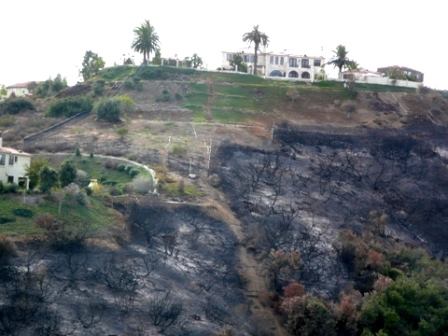From October through November 2007, 25 separate fires burned through seven Southern California counties, destroying or damaging 2,250 homes and scorching several hundred thousand acres, much of it wilderness land. Many California wildlands are naturally at high risk for fires, and the risks and costs greatly increase as more and more people move closer to them.
“As the area gets built up, the easy stuff gets taken. So people move further out where it’s less expensive to live, but more expensive to develop because of the land conditions,” says custom builder and former volunteer wildland firefighter Turko Semmes of Atascadero, Calif. “You have to ask the hard question: Should you build a house here?”
Building in or near fire-hazard areas brings together flammable vegetation and vulnerable man-made structures, creating Wildland-Urban Interfaces. The combination can be deadly, as vegetation helps fire spread quickly throughout a community, acting as a bridge or a ladder between structures. As communities grow and firefighting crews become more and more overtaxed, there is a greater need to build homes that can resist the destructive forces of fire.
California’s fire-hazard zone home building codes are evolving quickly, but one fledgling home building movement takes fire-resistive building further by incorporating community-wide strategies. The concept of Shelter-in-Place (SIP) building—a recent import from Australia—calls for entire communities to be designed around construction, landscaping, and maintenance practices that help prevent damage and destruction from wildfires.
Five San Diego County communities designed and built using SIP methods are notable for having survived October 2007’s Witch Creek fire almost entirely intact. Out of the 2,460 luxury and custom homes in the area of Rancho Santa Fe, only one was damaged because its owner had left its garage door open, allowing fire to invade the structure.
Continued on next page.



